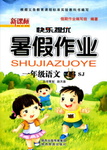题目内容
When it comes to problem solving, many of us have heard of the skills of the crow (乌鸦) in Aesop’s Fables (《伊索寓言》).
In the story, a thirsty crow comes across a bottle of water, but the water level (水平面) is out of its reach. The bird then drops small stones into it until the water level rises enough for the bird to drink.
“Oh, it’s just a fable,” you may think. After all, it’s hard to imagine birds knowing about “problem solving”.
But new research has found that crows’ brains may sometimes be better than those of 6-year-old children.
In a recent experiment, US scientist Corina Logan and her team caught six crows to test them. There were two tubes (试管) of water, one wide and the other narrow (窄的). Each crow was given four stones, enough to help them get the water in the narrow tube, but not the wide one.
Surprisingly, the crows dropped all or most of the stones into the narrower tube and got the food reward! They had found out the cause-and-effect relationship.Using such brains, crows are making their lives easier. For example, some crows in cities have learned to use road traffic for breaking nuts, National Geographic News reported.
But how are their wits (智力) compared to humans’? Logan’s team did another experiment, this time on both crows and children.
Here, the crows and children had to choose between two sets of tubes.
With the red set, when they dropped a stone into a wide tube, the water level raised in a connected narrow tube that contained food.
The blue set of tubes, however, had no connection between them. So dropping a stone in the wide tube did not cause the water level to rise in the narrow tube.
Children aged 7 to 10 were able to learn the rule. Children aged 4 to 6, however, failed.
Five of the six crows failed the test. But Kitty, a 6-month-old crow, passed it. She put all or most of the stones into the red tube.
So, could a bird be more clever than a kindergartner? Don’t be too quick to say no.
1.Why is Aesop’s Fables mentioned in the beginning of the article?
A. To introduce the idea that crows are smart.
B. To show that fables about crows are wrong.
C. To explain why crows can solve problems.
D. To prove that crows can be better than babies at problem solving.
2.What have Logan’s team found out from their recent experiments?
A. Crows prefer to get their food reward from wider tubes.
B. Crows are able to understand or learn cause and effect relationships.
C. Crows can easily recognize the tubes with a food reward inside.
D. Some crows even make use of road traffic to help them break nuts.
3.What can we learn from the experiment on crows and children?
A. Five of the six crows threw stones into the red tube.
B. Children aged 6 did better than children aged 4.
C. One crow passed the test while the younger children didn’t.
D. Some crows proved to be more clever than children aged 10.
1.A
2.B
3.C
【解析】
试题分析: 本文是一篇研究类短文,说明了乌鸦比孩子的智商还要高。主要考查细节理解题。
1.A细节理解题。文章开头的故事,问题都是为了引出主题。故选A。
2.B推理判断题。根据第三段“They had found out the cause-and-effect relationship.”可知选B。
3.C细节理解题。根据“Children aged 7 to 10 were able to learn the rule. Children aged 4 to 6, however, failed. Five of the six crows failed the test. But Kitty, a 6-month-old crow, passed it. She put all or most of the stones into the red tube.”可知,孩子都没有通过测试,而其中一只乌鸦通过了测试。故选C。
考点:研究类短文

 新课标快乐提优暑假作业陕西旅游出版社系列答案
新课标快乐提优暑假作业陕西旅游出版社系列答案